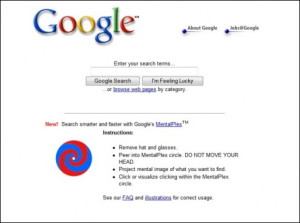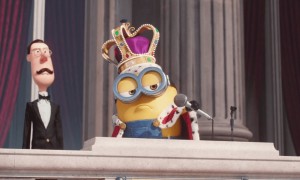Google’s Gags
Published on June 6, 2017, at 8:07 a.m.
by Leah Tobak.
Since the turn of the century, Google has consistently set the standard for company April Fools’ Day jokes. Beginning in 2000, Google’s annual antics began drawing national attention and inspiring other companies to follow suit.
“Google has established itself as the ultimate prankster – something that other brands strive to match,” says Katie Beck, public relations and digital media coordinator at Style Advertising. “While Google is often in the news for its attempts to enter other countries, lawsuits, cyber security issues, etc., their April Fools’ shenanigans are a chance for positive PR – they take something so seemingly ridiculous and market it like they would an actual new product, feature or service. And they are almost believable because of the effort put behind it!”
The company’s first prank promised to disclose users’ desired search results by staring at and clicking a spiral graphic. Instead, it revealed a variety of comical error messages and the punch line: links to websites about April Fools’ Day.

Once Google realized the success of its high jinx, the company began putting out numerous pranks each time April 1 came around, peaking in 2012 with 22 released shenanigans. These spoofs have included everything from a release of Google Gulp: the first “smart drink” (2005), to a fake Google dating site (2006), to an imaginary wake-up kit featuring a bed-flipping attachment (2008).
Let’s take a closer look at some of its most significant April Fools’ endeavors.
In 2004, Google advertised Gmail: an email service with an unbelievable 1GB of space. (At the time, other traditional email sites offered around 2MB.) The company’s use of comical language and the date of release had users convinced it just was that year’s prank. Plot twist: It was a double prank, and Gmail came into legitimate existence.
Not only did this strategic move continue the company’s annual tradition, but it also drew swift attention to an actual feature Google was releasing, leaving users impressed with Google’s wit and enthused about the new service.
Rebecca Weinstein, HR communications coordinator at Vanderbilt University Medical Center, commends, “Companies that take the risk to build their brand personality through a more unconventional way will find that they may reach a larger audience than expected or create talk between consumers that may one day become customers.”
So what happens when one of these antics goes awry? Google unfortunately found out this past holiday.
On April 1, 2016, as one of Google’s 11 antics, it replaced Gmail’s “Send+Archive” button with a “Send+Mic Drop” button. When pressed, it added a gif of a minion from animated film “Despicable Me 2” dropping a microphone and walking away from a podium to your email before it sent. Sounds harmless enough, right?

The trouble ensued when users writing serious emails incidentally clicked the new button. Specific examples of these rouge emails include business emails and emails containing sober subject matters such as funeral arrangements.
Thankfully Google, being the reputable and well-seasoned company that it is, handled this crisis with speed and efficiency. Within hours staff removed the button and released apology statements, transparently admitting their blunder. Beck commented, “Even though this year’s was a flop, other brands wish they could come close to the response they receive for the pranks. Their pranks are something I look forward to every year – even the flops!”
Google has overall upheld an appreciated (and hilarious) role in April Fools’ Day and set the precedent for companies’ participation across the nation. Weinstein continues, “If smaller companies realize that one of the most notable companies in the world can take a moment to crack a joke, so can they.” We can’t wait to see what next year will hold.




